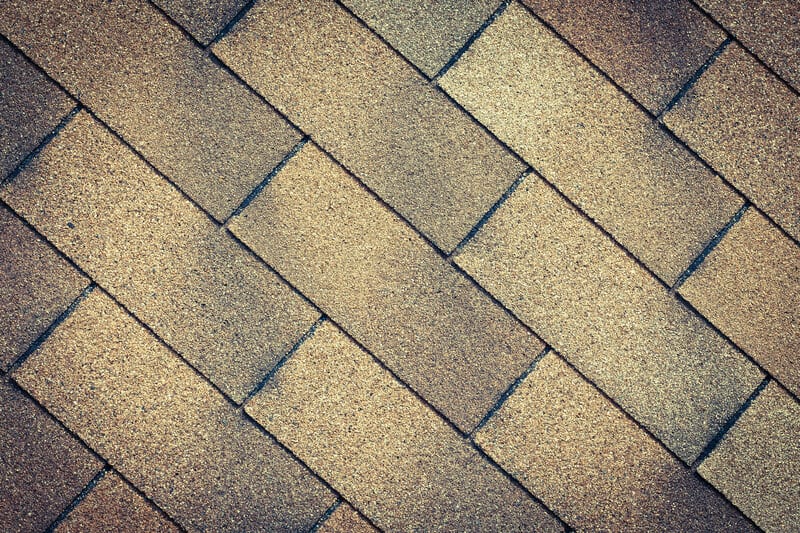
This time of year, we receive at least one or two phone calls a day from homeowners asking, “Why are there black streaks on my roof?” The combination of wet days interspersed with sunshine are the perfect storm for mold and fungus spores to bloom.
Those Black Patches On The Roof Are Probably Algae
Algae is a familiar guest on Bay Area roofs. This is especially true for roofs needing repair or replacement or homes that spend lots of time in the shade.
Why Does Algae Grow On Roofs?
Algae spores are deposited on roofs via wind, moisture runoff, animal droppings and footprints, or falling leaf and tree debris. The single-cell spores can remain dormant for long periods until conditions are right. As a result, algae, along with moss, mold, and fungus, are some of the most common causes of discolored roofs.
The best conditions for algae to germinate and reproduce on a roof are:
- The presence of an organic material to feed on (such as common roofing materials)
- Already decaying material (like a poorly maintained roof)
- Moisture
- A little sunlight
- Warmth increases the rate at which algae grows (which is why you’re more apt to notice it during the early spring and summer months)
The algae found on the roof in this region is a blue-green algae called gloeocapsa magma. Even though it’s blue-green in some states, it turns black to protect itself from UV rays, and dead algae also appears black. Because it prefers more shade and less sun, you’re most likely to see roof algae on the north-facing slopes of the roof. Algae will grow just about anywhere if the roof is heavily shaded by trees or other landscape or geographical features.
Risk Factors For Algae On A Roof
Your roof is more likely to have algae issues if your roof:
- Lives in a coastal, warm, or humid climate
- Is flat or doesn’t drain well
- Is mostly shaded or doesn’t get much direct sunlight
- Already has leaks, damage, or moisture issues
- Is covered with wood shingles, asphalt shingles, or concrete tiles
In addition to being unattractive, algae on the roof pose risks and other issues. These include:
- Diminished curb appeal
- Lower home value
- Compromised energy efficiency
- Less comfortable interior temperatures and humidity levels
- Potential structural damage if the roof is seriously damaged
Addressing discoloration on your roof is a top priority.
Clean Roof Algae ASAP
In its blue/green or fuzzy states, roof algae can appear attractive, and some homeowners appreciate the storybook or “green roof” appearance. However, it needs to be removed, and the roof should be professionally cleaned ASAP.
Algae eats roofing materials, so the longer you leave it there, the more damage it does. That can lead to very expensive or irreparable roof damage – not to mention structural and moisture damage on the interior of your attic or exterior walls.
Steps For Cleaning And Preventing Algae On The Roof
The minute you notice any discoloration on your roof, we recommend scheduling an inspection with a licensed roofing contractor to establish its cause and how to fix it.
A roofing contractor can clean roof algae for you
After the roof inspection, we’ll inform you about any existing repair issues. We’re also happy to clean the roof while we’re there so that you can cross that to-do off your list. We especially recommend using a professional roofing contractor to clean the roof if you have a multi-story home or a steeply sloped roof.
Roof cleaning can be a DIY project
If you live in a single-story home and have the materials and safety-know how cleaning a roof is a simple DIY process. Read Roof Algae & How to Fix It for a materials list and instructions.
Take action to prevent future black stains on your roof
Sometimes roof algae are impossible to eradicate, but there are things you can do to prevent or slow down its growth:
- Minimize the amount of overhanging branches shading the roof
- Remove leaves and other debris from the roof
- Keep your roof in good repair
- Install zinc or copper metal strips along the roof’s surface (they’re toxic to organic materials). These should be installed professionally for optimal function or they can do more harm than good.
- Consider a metal roof when yours needs to be replaced. In addition to preventing algae growth, metal roofs are fire resistant, making them an increasingly popular option for Bay Area roofs.
Pacific Coast Roofing Fixes Black Streaks On The Roof
Is your roof showing signs of an algae infestation? Give us a call here at Pacific Coast Roofing – (510) 722-1530. We’ll schedule a time to inspect and clean the roof and make recommendations about the best way to avoid roof algae in the future. Contact us to learn more.

